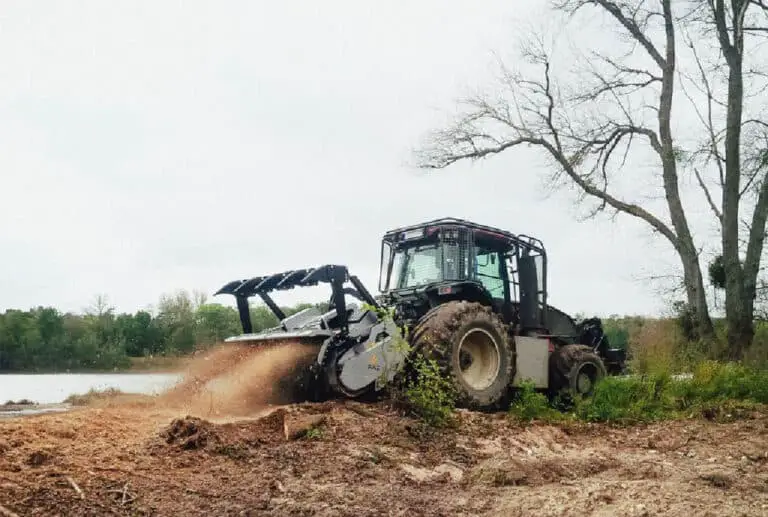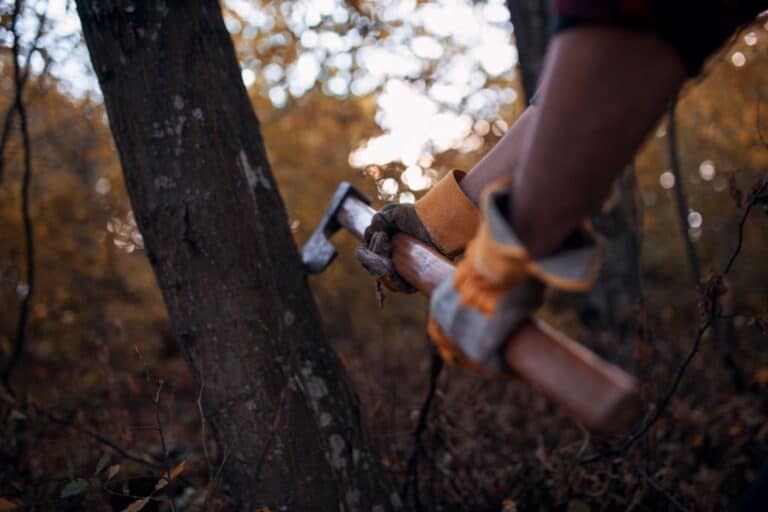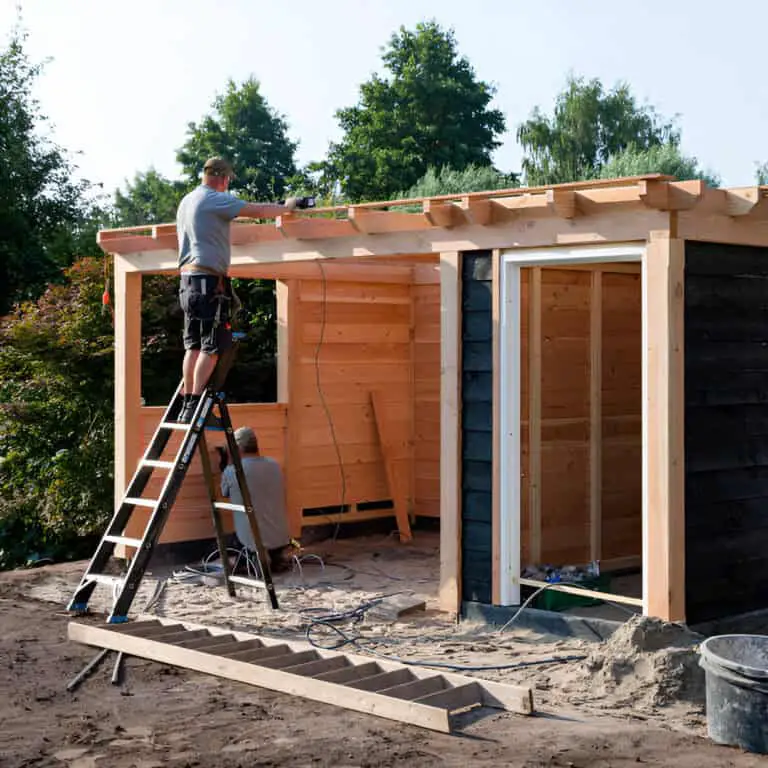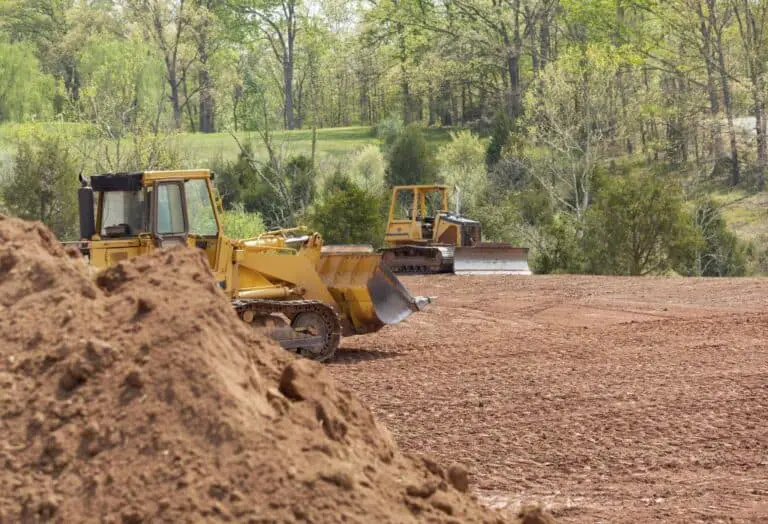Pros and Cons of Forestry Mulching (Is Forestry Mulching Worth It?)
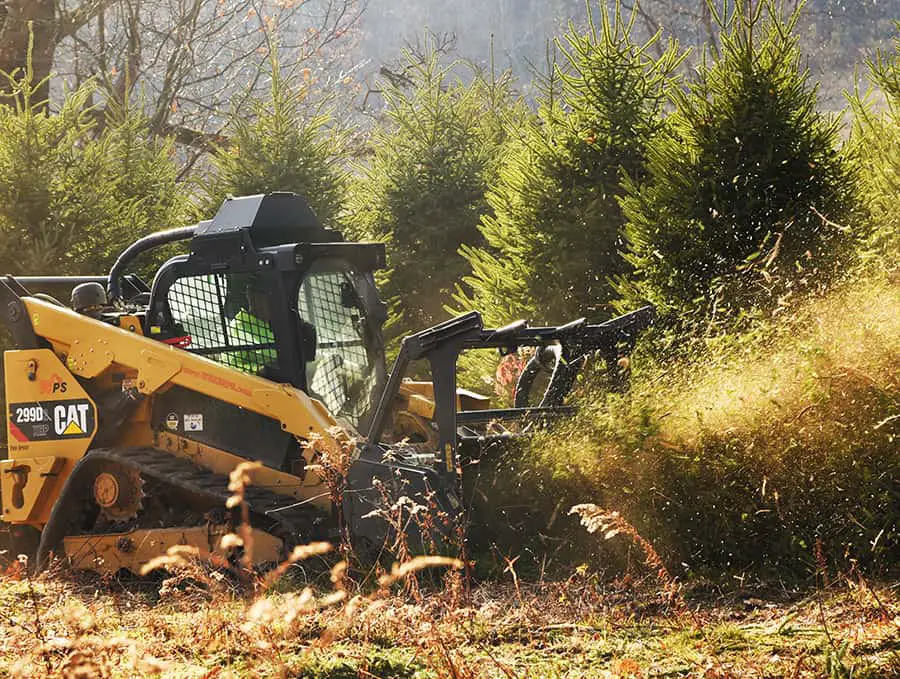
Forestry mulching is a practice that is becoming more and more popular among forestry professionals. Forestry mulching is a process that utilizes a machine to cut and chip trees and other vegetation. It is part of the overall land clearing management system.
The popularity of forestry mulching has grown in recent years as more and more people have become aware of the benefits of using forestry mulching. Mulch retains soil moisture, reducing the need for watering. It also suppresses weed growth. This highlights the benefits of forestry mulching for a healthy ecosystem. Mulch can also add nutrients to the soil as it decomposes.
Forestry mulching has pros and cons. This shows the importance of knowing its advantages and disadvantages. We will discuss this in detail in this article.
Pros of Forestry Mulching (Advantages)
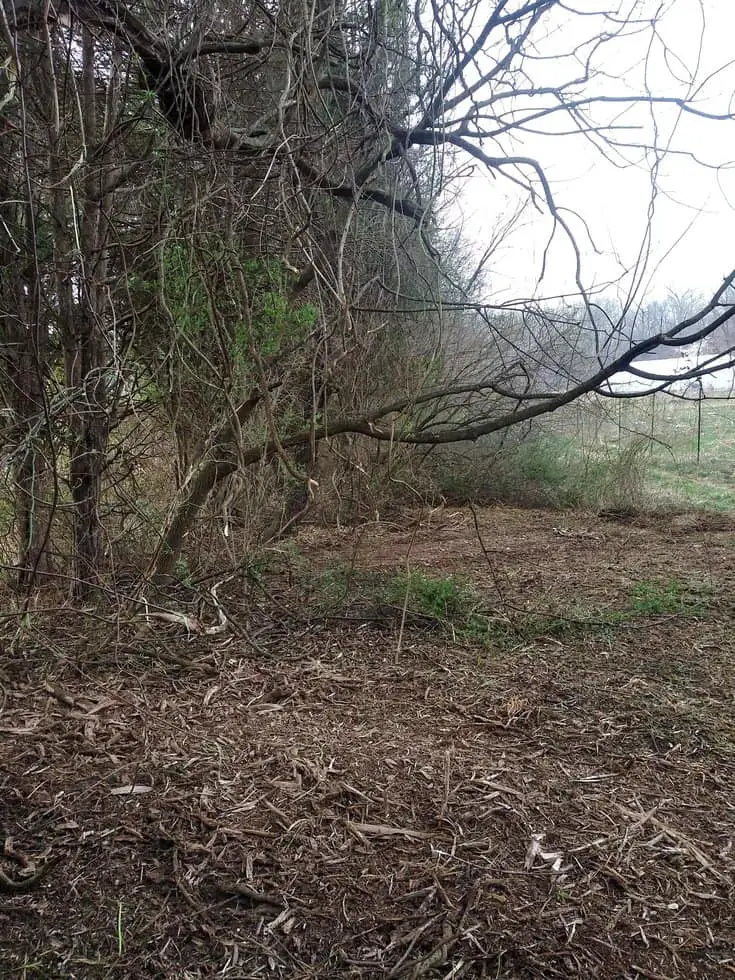
1. Landscape Controlled
Plant-by-plant forestry mulching can be performed, where each plant is mulched in its original spot. By doing so, the landowner can choose what plant stays and what they want to remove. Doing this will result in an easier approach. The approach will be controlled by the landscape. It will be for achieving specific ecological goals.
2. Erosion Controlled
Clearing the land may leave the area with bare soil that is vulnerable to wind and rain erosion. Mulch is an excellent way to keep soil in place, while also preserving the structure and form of trees and vegetation roots. This erosion control aids in the conservation of both soil and vegetation, which is crucial for areas at risk of wildfire.
3. Soil Quality Improvement
The decomposition of organic materials as they decay renews a natural forest floor. Natural mulch, on the other hand, provides nutrients to the soil as it decomposes.
This helps in the regeneration of the grounds and adds volume to them. It creates a healthy environment for the growth of trees and plants, promoting regrowth and biodiversity.
Forestry Mulching also helps to prevent mold growth and fungus-related diseases in wooded areas. Overall, forestry mulching promotes soil quality improvement.
4. Time And Environment Conservation
Forestry mulching helps to conserve both time and the environment. The process of forestry mulching uses a machine to chop down trees, brush them, and then mulch them into small pieces. This process is much quicker than traditional land clearing methods, such as bulldozing, which can take days or even weeks.
In addition, forestry mulching does not produce the same amount of air pollution as burning vegetation. The outcome is environmentally friendly.
For property owners who want to be good stewards of their time, money, and land, this is a win-win situation.
5. Reduced Need For Equipment
Forestry mulching simplifies the process of traditional land clearing. It reduces the need for many heavy equipment units by combining excavators, shears, wood chippers, and grinders into a single machine.
There is no need for vehicles like trucks to transport debris and waste because there is none; everything is transformed into mulch. A single machine can carry out all of these tasks, saving time and money on fuel.
Cons of Forestry Mulching (Disadvantages)
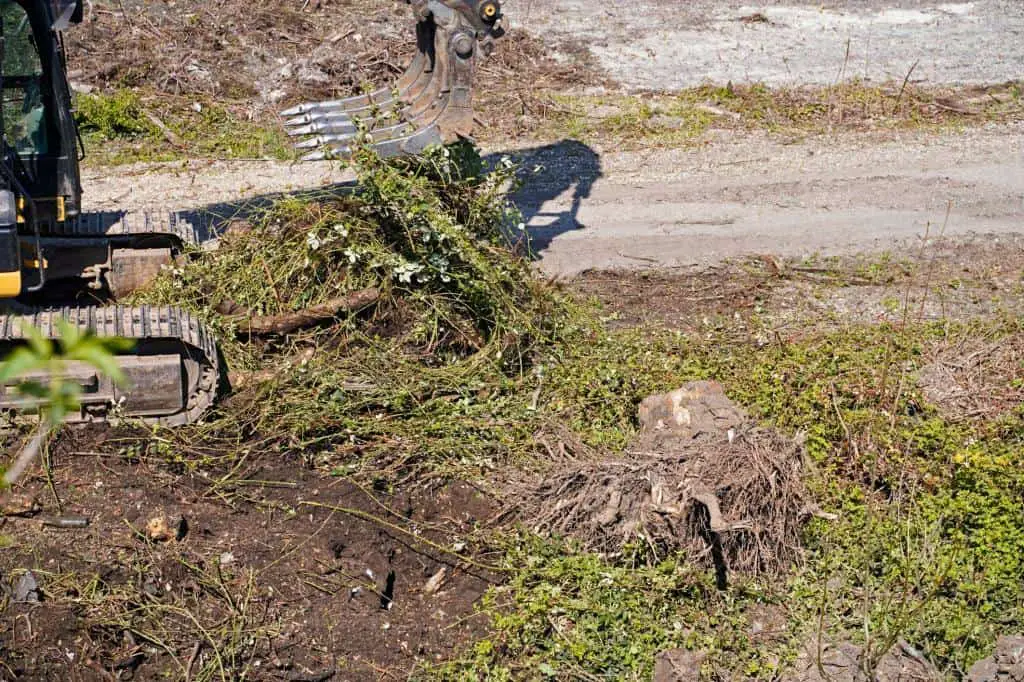
1. Only for Smaller Trees
Forestry mulching is not the right solution for every tree. Forestry mulchers, especially those attached to a skid steer, can only cut and fell smaller trees, depending on the size and position of the mulching head, which may limit their use in certain forestry applications.
Mulchers have a vertically rotating head. They can usually handle trees up to 6–8 inches wide. Mulchers with a horizontally rotating head can handle trees up to 30 inches wide.
Mulching trees that are larger than this can be hazardous to both the machine and the operator. A tilting bracket on some excavator mulching attachments considerably lowers the chance of felling trees that are larger than those desired.
2. May Need Multiple Equipments
Using a forestry mulcher can be beneficial for many jobs. But, in some cases, a skid steer and other equipment may be needed to do the job cost-effectively.
One situation in which multiple pieces of equipment may be necessary is when there is a large amount of debris that needs to be cleared. In these cases, it may be necessary to use a tractor with a front-end loader or grapple to move the debris out of the way so that the forestry mulcher can operate effectively.
Additionally, if there are large stumps or rocks in the area that need to be removed, a backhoe or bulldozer may be necessary.
| Read: How To Maintain Your Forestry Mulcher for Optimal Performance |
3. Can Not Process Rocks & Stones
A forestry mulcher can cut and chop the vegetation and then spew it out behind the machine. This is a quick, efficient way to clear land with one machine, but there is one problem: forestry mulching cannot process rocks and stones.
Rocks and stones are too big for the blades on the mulcher to chop up. They pass through the machine untouched. They create a dangerous obstacle course for anyone walking or driving through the area that has been mulched. This shows the disadvantage of forestry mulching: it can’t clear all obstacles.
This can be a major issue in areas where there are large rocks or stones on the property. The rocks can damage the equipment or injure someone walking or driving through the area.
There are some ways to get around this problem. One is to remove all the rocks and stones from the area before you start forestry mulching. But this will need additional steps in the mulching process.
4. Need Road Access
Forestry mulching is an important and necessary forestry practice, but it can be difficult to execute without road access. Forest roads are needed to provide transportation for machinery and personnel, as well as to haul away debris.
In some cases, where there is no road access, the only way to conduct forestry mulching is by flying in a helicopter. It can be costly and time-consuming. So, plan ahead. Make sure you have the needed road access before starting any mulching project.
5. Susceptible for Disease and Pests
Mulching creates an ideal environment for organisms to reproduce. While some, like earthworms, are beneficial to the soil and crops, mulch can also allow some harmful pests and disease-causing microbes and organisms to survive and multiply.
Mulching should be done with caution so that these pests and microorganisms do not multiply and create a serious hazard to your land. You can get guidance on the best steps to control pest breeding when mulching. You can get it from an expert firm that does mulching services in your area.
6. Threaten Soil Quality
Soil quality is a measure of the health of the soil. The physical, chemical, and biological characteristics of the soil are what determine it. Soil quality is important because it affects plant growth and water availability. Poor soil quality can lead to erosion, which can damage ecosystems and property.
Forestry mulching can decrease soil quality if not done properly by a professional forestry mulching company, highlighting the disadvantages of poor practice. Improperly applied mulch can cause compaction, which reduces the ability of the soil to absorb water and air. Mulch can also harbor pests and diseases, which can damage plants.
Forestry Mulching Process
Mulching is the process of layering organic and inorganic materials over the soil to protect the plants and improve the soil.
The mulch also moderates the soil temperature, assists in water retention, and discourages weed growth. There are many types of mulch to choose from, such as wood chips, leaves, straws, and plastic.
The first step in mulching a forest is to clear away any debris on the ground. This includes branches, leaves, and other plant materials.
The next step is to spread a layer of organic material over the ground. This could be composted leaves, bark chips, or straw. The organic material should be about 2–4 inches thick.
After the organic layer is in place, a layer of inorganic material can be added on top. This could be crushed rock or plastic sheeting. In order to prevent weeds, it is important that the organic material be as dry as possible. This can be achieved by spreading it out over the ground before adding any inorganic material.
The final step in mulching your forest is to water the plants thoroughly with a garden hose. This will help to keep the soil moist, which will help to prevent weeds.
What Type Of Mulch for Forestry Mulching?
There are several types of mulch you can apply to your forest. The type you use depends on your climate and the plants you have chosen to grow. This makes forestry mulching a versatile solution for regrowth.
Common types of mulch include bark, grass clippings, and pine needles. Bark can be found at most garden stores or lumber yards. You will need to cut your bark into small pieces. They should be about ½” long. A skid steer with forestry mulching capabilities can do this task efficiently.
The bark can be mixed with your soil, composted, and mixed into the garden. The bark will help to prevent weed growth and even deter deer from grazing in your garden. Bark is also a great source of calcium for your forest. It can also be used as a natural filter for your soil.
Grass clippings and pine needles are both great mulches that can also be found at any garden store, or even a large home improvement store.
You can mulch the forest with wood chips or sawdust. These materials are great for adding nutrients to your soil, and can be recycled from your home. Essentially, this method is the same as using wood shavings on improving your lawn.
Is Forestry Mulching Worth It?
Forestry mulching can be a great way to clear an area for new growth, but is it always worth the cost?
If you’re considering forestry mulching as a way to clear land for new growth, there are a few things you should keep in mind.
First, what is your goal for the land? If you’re looking to create a new space for crops or pasture, forestry mulching with a skid steer may be the most cost-effective option. However, if you’re hoping to create a forest or woodland area, forestry mulching may not be the best way to go.
One of the main drawbacks of forestry mulching is that it can damage or even kill young trees. If you’re creating a new forest or woodland area, avoid using forestry mulching. Instead, use traditional methods to clear the land.
What about mulching for wildlife? If you’re planting a new area for wildlife such as birds, butterflies, or other animals, try using forestry mulching. It’s also a good choice for creating a habitat for these animals. You’ll want to make sure you don’t accidentally damage the trees or other plants in the area when using forestry mulching.
Conclusion
In conclusion, forestry mulching is a valuable procedure that can be used to improve forest health and increase the growth of trees. However, it is important to consider the pros and cons of forestry mulching before making a decision to implement it in your forest.
Forests help to maintain a healthy environment by sequestering carbon dioxide, while also providing wood products used in construction and furniture. In addition, forestry mulching can help to reduce soil erosion and improve water infiltration rates. Finally, it has been shown to some extent that forestry mulching is worth it to increase crop yields in certain cases.


